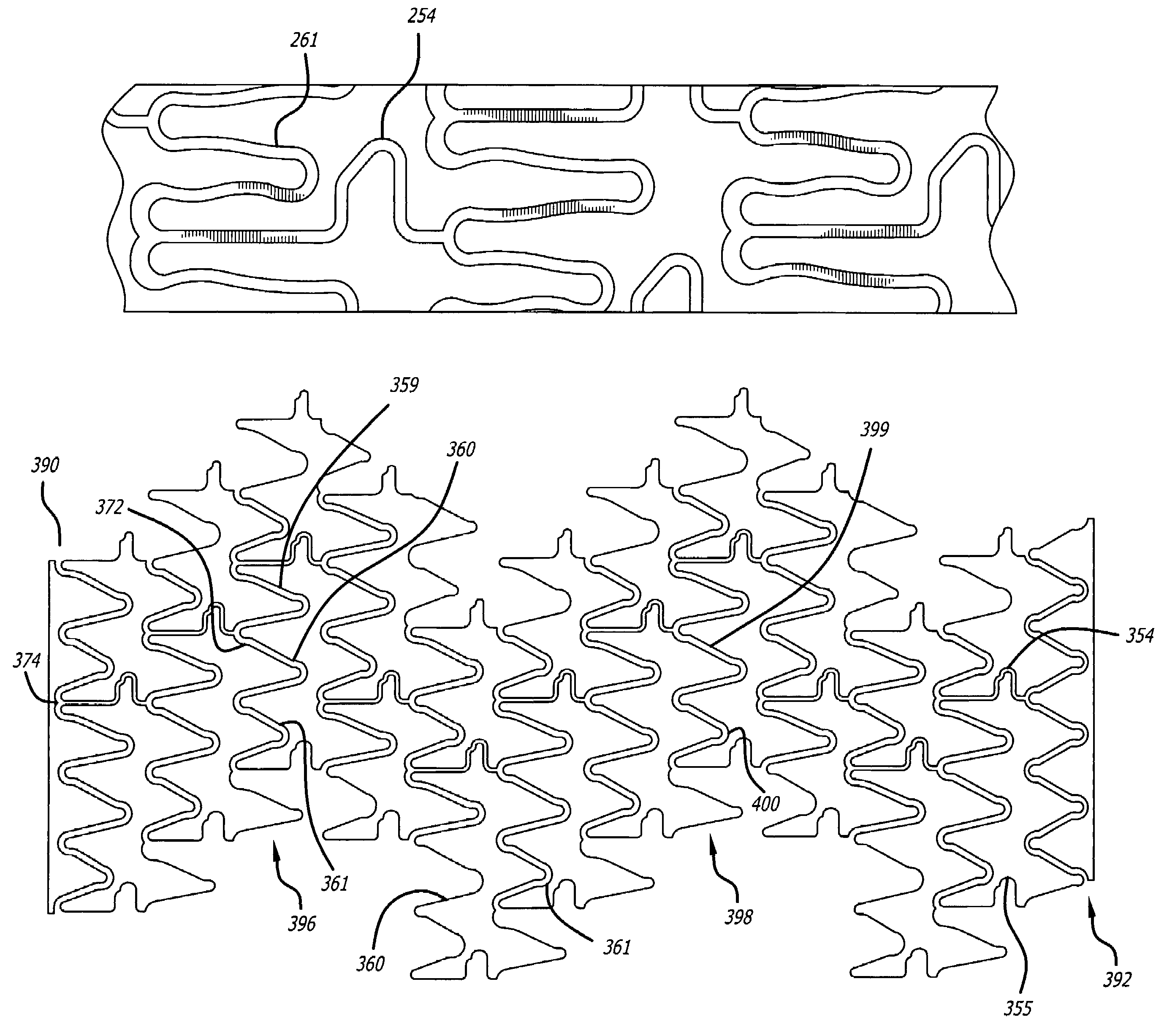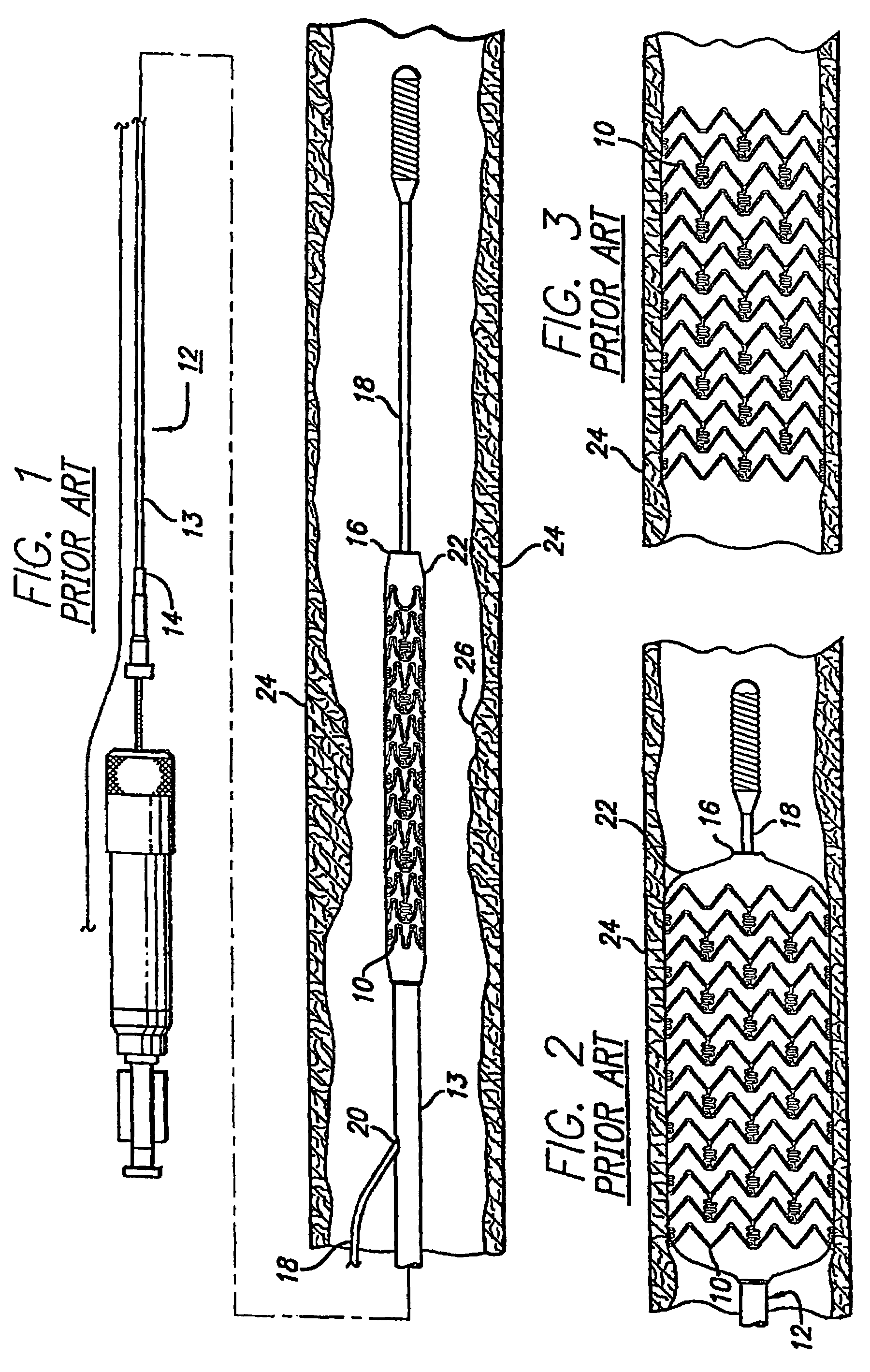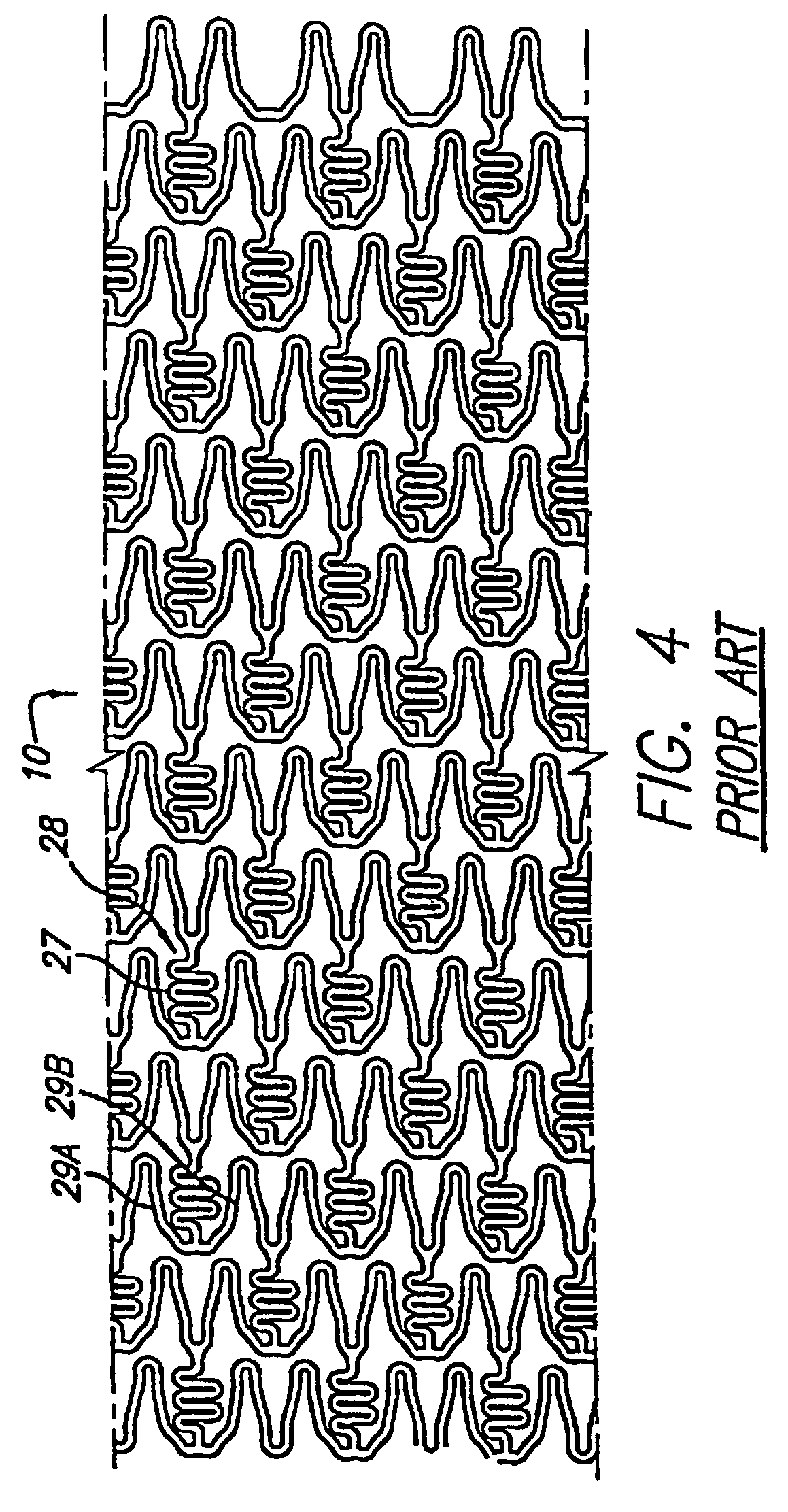Intravascular stent
a stent and crimping technology, applied in the field of vascular repair devices, can solve the problems of increasing the damage of the drug coating on the stent in this crimping configuration, increasing the difficulty in designing a stent, and the drug coating in certain regions of the stent becoming non-uniform, so as to reduce the likelihood of contact
- Summary
- Abstract
- Description
- Claims
- Application Information
AI Technical Summary
Benefits of technology
Problems solved by technology
Method used
Image
Examples
Embodiment Construction
[0039]Turning to the drawings, FIG. 1 depicts a prior art stent 10 mounted on a conventional catheter assembly 12. The assembly 12 is used to deliver and implant the stent in a body lumen, such as a coronary artery, peripheral artery, or other vessel or lumen within the body. The catheter assembly includes a catheter shaft 13 which has a proximal end 14 and a distal end 16. The catheter assembly is configured to advance through the patient's vascular system over a guide wire by any of the well known methods of an over the wire system (not shown) or by a well known rapid exchange catheter system, such as the one shown in FIG. 1.
[0040]Catheter assembly 12 as depicted in FIG. 1 is of the well known rapid exchange type which includes an RX port 20 where the guide wire 18 will exit the catheter. The distal end of the guide wire 18 exits the catheter distal end 16 so that the catheter advances along the guide wire on a section of the catheter between the RX port 20 and the catheter distal...
PUM
 Login to View More
Login to View More Abstract
Description
Claims
Application Information
 Login to View More
Login to View More - R&D
- Intellectual Property
- Life Sciences
- Materials
- Tech Scout
- Unparalleled Data Quality
- Higher Quality Content
- 60% Fewer Hallucinations
Browse by: Latest US Patents, China's latest patents, Technical Efficacy Thesaurus, Application Domain, Technology Topic, Popular Technical Reports.
© 2025 PatSnap. All rights reserved.Legal|Privacy policy|Modern Slavery Act Transparency Statement|Sitemap|About US| Contact US: help@patsnap.com



